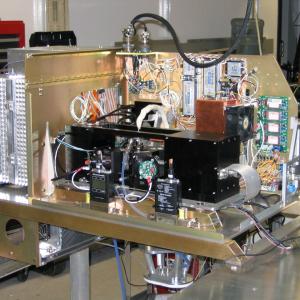The SP2 is a laser-induced incandescence instrument primarily used for measuring the refractory BC (rBC) mass content of individual accumulation-mode aerosol particles. It is able to provide this data product independently of the total particle morphology and mixing state, and thus delivers detailed information not only about BC loadings, but also size distributions, even in exceptionally clean air. The instrument can also provide the optical size of individual particles containing rBC, and identify the presence of materials associated with the BC fraction (i.e. identify the rBC’s mixing state). Since its introduction in 2003, the SP2 has been substantially improved, and now can be considered a highly competent instrument for assessing BC loadings and mixing state in situ. NOAA deploys multiple SP2s with different designs: the first was built for the WB-57F research aircraft. Two others are rack-mounted units customized at NOAA; one of the rack mounted units can be humidified, and has been deployed with a paired dry rack-mounted SP2 as the "Humidified-Dual SP2" (HD-SP2). The rack mounted units are suitable for in-cabin operations.
Measurement Details
Integration Details
Additional Information
Disclaimer: This material is being kept online for historical purposes. Though accurate at the time of publication, it is no longer being updated. The page may contain broken links or outdated information, and parts may not function in current web browsers. Visit https://espo.nasa.gov for information about our current projects.


